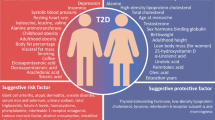Abstract
Type 2 diabetes mellitus (T2DM) is a complex disease characterized by insulin resistance and defect of insulin secretion. The worldwide prevalence of T2DM is steadily increasing. T2DM is also significantly associated with obesity, coronary artery disease (CAD), and metabolic syndrome. There is a clear difference in the prevalence of T2DM among populations, and T2DM is highly heritable. Human adaptations to environmental changes in food supply, lifestyle, and geography may have pressured the selection of genes associated with the metabolism of glucose, lipids, carbohydrates, and energy. The insulin receptor substrate-1 (IRS1) gene is considered a major T2DM gene, and common genetic variations near the IRS1 gene were found to be associated with T2DM, insulin resistance, adiposity, and CAD. Here, we aimed to find evidence of selection at the IRS1 gene loci using the HapMap population data. We investigated a 3-step test procedure—Wright’s F statistics (Fst), the long-range haplotype (LRH) test, and the integrated haplotype score (iHS) test—to detect selection at the IRS1 gene loci using the HapMap population data. We observed that 1 CAD-associated SNP (rs2943634) and 1 adiposity- and insulin resistance-associated SNP (rs2943650) exhibited high Fst values. We also found selection at the IRS1 gene loci by the LRH test and the iHS test. These findings suggest evidence of selection at the IRS1 gene loci and that further studies should examine the adaptive evolution of T2DM genes.
Similar content being viewed by others
References
Wild S, Roglic G, Green A, Sicree R, King H (2004) Global prevalence of diabetes: estimates for the year 2000 and projections for 2030. Diabetes Care 27:1047–1053
Almgren P, Lehtovirta M, Isomaa B et al (2011) Heritability and familiarity of type 2 diabetes and related quantitative traits in the Botnia Study. Diabetologia 54:2811–2819
Poulsen P, Kyvik KO, Vaag A, Beck-Nielsen H (1999) Heritability of type II (non-insulin-dependent) diabetes mellitus and abnormal glucose tolerance—a population-based twin study. Diabetologia 42:139–145
Das SK, Elbein SC (2006) The genetic basis of type 2 diabetes. Cellscience 2:100–131
Diamond J (2003) The double puzzle of diabetes. Nature 423:599–602
Diamond J (2002) Evolution, consequences and future of plant and animal domestication. Nature 418:700–707
Tishkoff SA, Varkonyi R, Cahinhinan N et al (2001) Haplotype diversity and linkage disequilibrium at human G6PD: recent origin of alleles that confer malarial resistance. Science 293:455–462
Sabeti PC, Reich DE, Higgins JM et al (2002) Detecting recent positive selection in the human genome from haplotype structure. Nature 419:832–837
Helgason A, Pálsson S, Thorleifsson G et al (2007) Refining the impact of TCF7L2 gene variants on type 2 diabetes and adaptive evolution. Nat Genet 39:218–225
Rung J, Cauchi S, Albrechtsen A et al (2009) Genetic variant near IRS1 is associated with type 2 diabetes, insulin resistance and hyperinsulinemia. Nat Genet 41:1110–1115
Voight BF, Scott LJ, Steinthorsdottir V et al (2010) Twelve type 2 diabetes susceptibility loci identified through large-scale association analysis. Nat Genet 42:578–589
Kilpeläinen TO, Zillikens MC, Stančákova A et al (2011) Genetic variation near IRS1 associates with reduced adiposity and an impaired metabolic profile. Nat Genet 43:753–763
Samani NJ, Erdmann J, Hall AS et al (2007) Genomewide association analysis of coronary artery disease. N Engl J Med 357:443–453
The International HapMap Consortium (2005) A haplotype map of the human genome. Nature 437:1299–1320
Novembre J, Di Rienzo A (2009) Spatial patterns of variation due to natural selection in humans. Nat Rev Genet 10:745–755
Holsinger KE, Weir BS (2009) Genetics in geographically structured populations: defining, estimating and interpreting F(ST). Nat Rev Genet 10:639–650
Voight BF, Kudaravalli S, Wen X, Pritchard JK (2006) A map of recent positive selection in the human genome. PLoS Biol 4:446–458
Excoffier L, Laval G, Schneider S (2005) Arlequin (version 3.0): an integrated software package for population genetics data analysis. Evol Bioinform Online 1:47–50
Southam L, Soranzo N, Montgomery SB et al (2009) Is the thrifty genotype hypothesis supported by evidence based on confirmed type 2 diabetes- and obesity-susceptibility variants? Diabetologia 52:1846–1851
Pickrell JK, Coop G, Novembre J et al (2009) Signals of recent positive selection in a worldwide sample of human populations. Genome Res 19:826–837
Mountain JL, Risch N (2004) Assessing genetic contributions to phenotypic differences among ‘racial’ and ‘ethnic’ groups. Nat Genet 36:S48–S53
Bersaglieri T, Sabeti PC, Patterson N et al (2004) Genetic signatures of strong recent positive selection at the lactase gene. Am J Hum Genet 74:1111–1120
Wooding S, Kim UK, Bamshad MJ et al (2004) Natural selection and molecular evolution in PTC, a bitter-taste receptor gene. Am J Hum Genet 74:637–646
Bamshad MJ, Mummidi S, Gonzalez E et al (2002) A strong signature of balancing selection in the 5’ cis-regulatory region of CCR5. Proc Natl Acad Sci USA 99:10539–10544
Darwin C (1859) The origin of species by means of natural selection. Murray, London
Maskarinec G, Erber E, Grandinetti A et al (2009) Diabetes incidence based on linkages with health plans: the multiethnic cohort. Diabetes 58:1732–1738
Rothenberg PL, Lane WS, Karasik A, Backer J, White M, Kahn CR (1991) Purification and partial sequence analysis of pp185, the major cellular substrate of the insulin receptor tyrosine kinase. J Biol Chem 266:8302–8311
Sun XJ, Rothenberg P, Kahn CR et al (1991) Structure of the insulin receptor substrate IRS-1 defines a unique signal transduction protein. Nature 352:73–77
Folli F, Saad MJ, Backer JM, Kahn CR (1992) Insulin stimulation of phosphatidylinositol 3-kinase activity and association with insulin receptor substrate 1 in liver and muscle of the intact rat. J Biol Chem 267:22171–22177
Folli F, Saad MJ, Backer JM, Kahn CR (1993) Regulation of phosphatidylinositol 3-kinase activity in liver and muscle of animal models of insulin-resistant and insulin-deficient diabetes mellitus. J Clin Invest 92:1787–1794
Folli F, Saad MJ, Kahn CR (1996) Insulin receptor/IRS-1/PI 3-kinase signaling system in corticosteroid-induced insulin resistance. Acta Diabetol 33:185–192
Araki E, Lipes MA, Patti ME et al (1994) Alternative pathway of insulin signalling in mice with targeted disruption of the IRS-1 gene. Nature 372:186–190
Tamemoto H, Kadowaki T, Tobe K et al (1994) Insulin resistance and growth retardation in mice lacking insulin receptor substrate-1. Nature 372:182–186
Abe H, Yamada N, Kamata K et al (1998) Hypertension, hypertriglyceridemia, and impaired endothelium-dependent vascular relaxation in mice lacking insulin receptor substrate-1. J Clin Invest 101:1784–1788
Neel JV (1962) Diabetes mellitus: a “thrifty” genotype rendered detrimental by “progress”? Am J Hum Genet 14:353–362
Acknowledgments
We want to thank Kyoko Yoshiuchi for secretarial assistance.
Conflict of interest
None.
Author information
Authors and Affiliations
Corresponding author
Additional information
Communicated by Guido Pozza.
Electronic supplementary material
Below is the link to the electronic supplementary material.
Rights and permissions
About this article
Cite this article
Yoshiuchi, I. Evidence of selection at insulin receptor substrate-1 gene loci. Acta Diabetol 50, 775–779 (2013). https://doi.org/10.1007/s00592-012-0414-1
Received:
Accepted:
Published:
Issue Date:
DOI: https://doi.org/10.1007/s00592-012-0414-1




